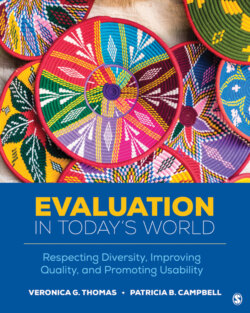Читать книгу Evaluation in Today’s World - Veronica G. Thomas - Страница 132
На сайте Литреса книга снята с продажи.
Hidden Figures and Histories in Early-20th-Century Evaluation
ОглавлениеAcross many fields, too often, the historical contributions of persons of color are dimmed in the limelight of white males, at best, or totally omitted, at worst, from accounts of significant events in this country. Increasingly, there are efforts to tell the untold accounts and hidden stories across various fields. For example, the nonfiction book Hidden Figures: The American Dream and the Untold Story of the Black Women Who Helped Win the Space Race (Shetterley, 2016) tells the incredible untold story of four brilliant African American female mathematicians, Dorothy Vaughan, Mary Jackson, Katherine Johnson, and Christine Darden, who worked at the National Aeronautics and Space Administration’s (NASA) Langley Research Center as “human computers” in the 1940s, 1950s, and beyond. In some respects, accounts of the historical evolution of evaluation, too, share the problem of ignoring the early contributions of persons of color and omitting critical evaluation studies that examined issues aimed toward ameliorating discrimination and social injustice. For example, between 1935 and 1951, 25 African Americans received their doctorates in education and conducted evaluations for their dissertations, but their work was, for the most part, unrecognized in its social and educational significance for African Americans (Hood, 2001; Hopson & Hood, 2005).
In critiquing Marvin Alkin’s (2004) historical assessment of evaluation theory and practice published in his Evaluation Roots volumes and depicted as an evaluation tree with three limbs (discussed in more detail in Chapter 4), Hood (2017) states that
Alkin’s historical contribution to evaluation theory and practice has consistently been discussed in my evaluation courses over the years. However, as I looked at the illustration of Alkin and Christie’s (2004) “evaluation tree,” I found no disagreement with roots…. Yet, what stood out to me was that Chen [Asian] was the only evaluator of color to be identified on this evaluation tree. As I looked at this evaluation tree and its branches, I could not help but think that there were other mighty trees in this evaluation forest which were either hidden from view or simply outside the view of this illustrator. (p. 265)
As Stafford Hood states in his Voices From the Field interview, it is important that evaluation history is told in a manner that is more diverse and inclusive than it has been in the past.
